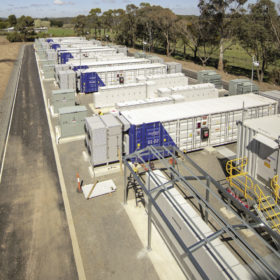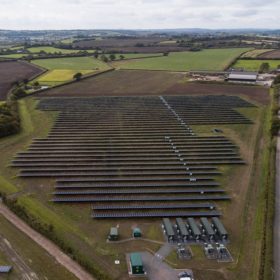UP: Taking on the challenge of sourcing raw materials for batteries in Q1 2020
Recent growth figures for the global storage market beggar belief. One Wood Mackenzie forecast anticipates market expansion from 12 GWh in 2018 to 158 GWh in 2024. While that will mean that many markets will be better equipped for the energy transition and more electric vehicles can hit the roads, concerns are being raised about […]
Exit strategy
With aggressive emissions-reduction goals and renewable energy targets expanding globally, storage is the final puzzle piece in the transition to a 100% renewable energy-powered grid. New gas-fired peaker plants are now being offset with the construction of storage facilities, and it is projected that the favorable economics of clean technologies will overtake existing gas generation assets by 2035. With the near-future potential of leaving stranded assets on the balance sheet, and advancing battery technology capabilities, there is a promising outlook for the accelerated decarbonization of the power sector.
Preparing for takeoff
With demand for lithium-ion battery cells picking up, largely driven by EVs but also from the fast-growing stationary storage segment, production capacities in China are ramping up quickly. But safety and quality must remain centrally important in the face of the need to scale, even more so after the numerous battery fires that shocked buyers globally and brought the South Korean market to a standstill. Clean Energy Associates (CEA) has launched the 2019 BESS Supplier Market Intelligence Program report, covering 40 suppliers, in an effort to support buyers navigating this novel supplier landscape. George Touloupas, CEA’s director of technology and quality for solar and storage, shares the company’s key findings on the supply chain and tells us what can have an impact on Li-ion safety and reliability.
Green shoots of recovery
There has been significant progress in the decarbonization of the electricity supply in Great Britain in recent years, underscored by a record run of 19 days of zero coal generation in May and June 2019. With National Grid’s stated aim of operating a carbon-neutral electricity system by 2025, the co-location of PV with battery storage could play a key role. The proposition offers the twin benefits of enabling increasingly high renewables penetration while simultaneously improving network stability. Adam Sharpe of Everoze explores the role of co-located PV and energy storage assets within the context of the UK’s future decarbonization plans.
On the road with pv magazine
Where we have been: Energy Storage North America (ESNA) Hosted in sunny San Diego, California, pv magazine played a more active participating role as a partner to the ESNA conference and expo in November. To support developers looking to get into or advance in the storage sector, our senior editorial staff moderated the “Adding Value […]
Safe, reliable, affordable storage to be a force
Geoffrey Song, vice president of Pylon Technologies
pv magazine test: October 2019 results
The next batch of energy yield results from the outdoor test field in Xi’an, China introduced new variables for bifacial modules. In this issue, we present the October 2019 results, alongside additional analysis from George Touloupas, director of technology and quality at CEA.







